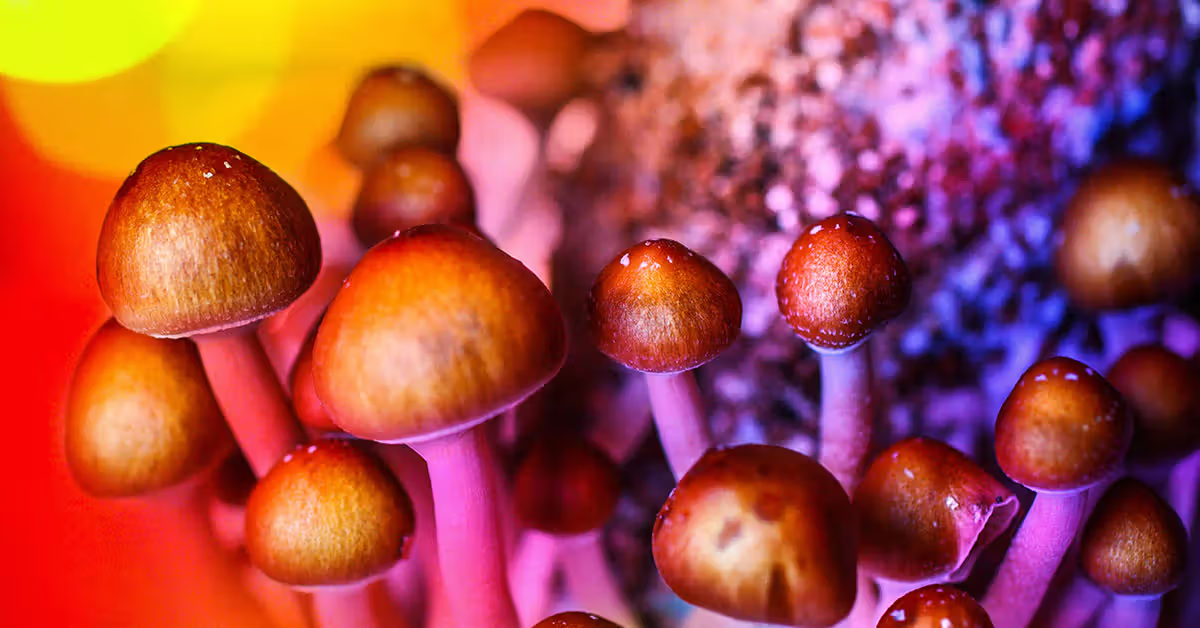Magic mushroom research

Abstract
The integration of psychedelic-assisted psychotherapy (PAP) into mental health treatment represents a significant paradigm shift, offering novel approaches to conditions resistant to traditional therapies. This paper delves into the multifaceted aspects of PAP, encompassing its therapeutic mechanisms, treatment phases, neurobiological effects, therapeutic potential, safety considerations, and the importance of set and setting. By examining current research and clinical practices, we aim to provide a comprehensive understanding of PAP's role in contemporary mental health care.
1. Introduction
Psychedelic substances, once relegated to the fringes of medical research due to sociopolitical factors, are experiencing a renaissance in scientific inquiry. Compounds such as psilocybin, lysergic acid diethylamide (LSD), and 3,4-methylenedioxymethamphetamine (MDMA) are being investigated for their potential to address various mental health disorders. Psychedelic-assisted psychotherapy (PAP) combines these substances with structured therapeutic interventions, aiming to facilitate profound psychological insights and healing.
2. Therapeutic Mechanisms of Psychedelic-Assisted Psychotherapy
2.1 Psychedelic-Induced Altered States
Psychedelics induce altered states of consciousness characterized by sensory, cognitive, and emotional changes. These states can lead to a dissolution of entrenched thought patterns, allowing individuals to process traumatic experiences and emotions from new perspectives.
2.2 Enhanced Neuroplasticity
Research indicates that psychedelics promote neuroplasticity—the brain's ability to reorganize itself by forming new neural connections. This enhanced plasticity may underpin the therapeutic effects observed in PAP, facilitating the restructuring of maladaptive neural circuits associated with mental health disorders.
2.3 Modulation of the Default Mode Network
The default mode network (DMN), a brain network active during self-referential thinking and mind-wandering, is often hyperactive in conditions like depression. Psychedelics have been shown to disrupt DMN activity, potentially reducing rumination and negative self-focused thoughts.
3. Phases of Psychedelic-Assisted Psychotherapy
3.1 Preparation Phase
Prior to the psychedelic experience, therapists work with patients to establish trust, set intentions, and prepare for potential psychological challenges. This phase is crucial for mitigating anxiety and ensuring a supportive environment.
3.2 Administration Phase
During this phase, the psychedelic substance is administered in a controlled setting. Therapists provide continuous support, guiding patients through the experience and addressing any distressing thoughts or emotions that may arise.
3.3 Integration Phase
Post-experience, therapists assist patients in processing insights gained, reinforcing positive changes, and developing strategies to incorporate these insights into daily life. Integration is vital for translating the acute effects of the psychedelic experience into enduring therapeutic outcomes.
4. Neurobiological Effects of Psychedelics
4.1 Serotonin Receptor Agonism
Psychedelics primarily act as agonists at serotonin 5-HT₂A receptors, leading to altered neurotransmission and the characteristic subjective effects. This receptor interaction is believed to play a role in mood regulation and cognitive flexibility.
4.2 Anti-Inflammatory Properties
Emerging research suggests that psychedelics possess anti-inflammatory effects, which may contribute to their therapeutic potential. For instance, studies have shown that psychedelics can reduce pro-inflammatory cytokines, offering potential benefits for conditions with an inflammatory component.
5. Therapeutic Potential of Psychedelic-Assisted Psychotherapy
5.1 Treatment-Resistant Depression
Clinical trials have demonstrated that psilocybin-assisted therapy can lead to significant reductions in depressive symptoms, even in individuals unresponsive to conventional treatments. These effects have been observed to persist for extended periods post-treatment.
5.2 Post-Traumatic Stress Disorder (PTSD)
MDMA-assisted psychotherapy has shown promise in treating PTSD, with studies reporting substantial improvements in symptom severity. The empathogenic properties of MDMA may facilitate the processing of traumatic memories in a therapeutic context.
5.3 End-of-Life Anxiety
Psychedelic therapy has been explored as a means to alleviate existential distress in terminally ill patients. Studies suggest that psychedelics can reduce anxiety and depression associated with end-of-life, enhancing the quality of life during palliative care.
6. Safety and Ethical Considerations
6.1 Adverse Psychological Reactions
While many individuals tolerate psychedelics well, there is a risk of adverse psychological reactions, such as anxiety, paranoia, or psychosis. Proper screening and the presence of trained professionals during administration are essential to mitigate these risks.
6.2 Ethical Implications
Ethical considerations in PAP include obtaining informed consent, ensuring patient autonomy, and addressing the potential for substance misuse. Establishing ethical guidelines is imperative as PAP becomes more integrated into clinical practice.
7. Importance of Set and Setting
The therapeutic outcome of PAP is significantly influenced by 'set' (the individual's mindset) and 'setting' (the physical and social environment). A supportive setting and a prepared mindset are associated with more favorable experiences and outcomes. This underscores the necessity of conducting PAP in controlled, therapeutic environments.
8. Conclusion
Psychedelic-assisted psychotherapy represents a promising frontier in mental health treatment, offering novel approaches to conditions that are challenging to treat with existing modalities. Continued research, ethical considerations, and the development of standardized protocols are essential to fully harness the therapeutic potential of psychedelics.
References
![Guild of the Dragons -Knowledge Node [^]~~~~~Gratitude~~~~~[^] G0TD](https://guild-of-the-dragons.ghost.io/content/images/2024/02/depositphotos_1562554-stock-photo-golden-dragon.jpg)